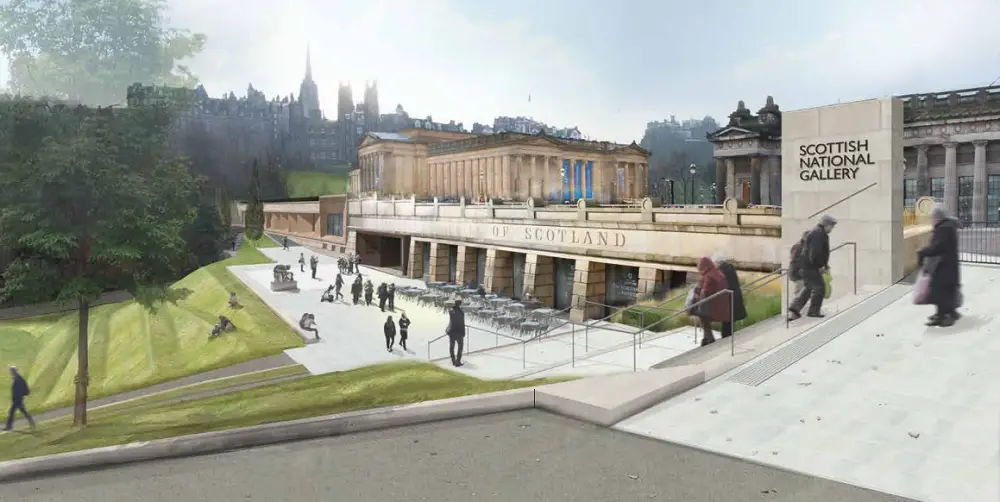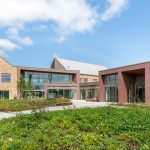Scottish Church Repair News, Religious Buildings in Scotland, Restoration, Renewal Fund, Refurbishment News
Scottish Church Repairs
Conservation of Buildings in Scotland, UK Religious Architecture Renewal News
Heritage Lottery Fund helps keep the rain off Mackintosh panels and the Dowry Brides
Seven dilapidated churches across Scotland, each reflecting very individual styles of architecture, are to be repaired thanks to over half a million pound funding package announced today by the Heritage Lottery Fund.
24 Sep 2007
Scottish Church Architecture
Dysart Parish Church, Dysart
One of the churches in need of urgent works to make it wind and watertight is Dysart Church in Fife. Built in 1874 by distinguished Glasgow firm, Campbell Douglas and Sellars, the Church is home to 12 recently discovered Charles Rennie Mackintosh panels. Painted in 1901 at the time of Mackintosh’s most creative period, records show that Mackintosh visited the Church in Oct 1901 and claimed £10 expenses, suggesting that he painted them himself.
The panels, in the apse of the Church, depict the dove of peace and the tree of knowledge with three rings. Discovered in 2004, they had been painted over in an attempt to ‘modernise’ the Church. A project to uncover and conserve them continues.
(Dysart Parish Church awarded a Stage one pass of £16,200)
The other churches stretch across Scotland. From quaint country setting to the modern city centre, these buildings reflect the diversity of our history, giving us an insight to the communities for which they were built. Their commonality is found in contributing to the area’s identity and providing a hub for local people to meet and share interests.
St Cyrus Parish Church, Mearns
A striking coastal landmark set in its cliff location near Montrose, St Cyrus Parish Church is home to the Dowry Brides. A bequest in the will of John Orr in 1844 provides for four local brides each year – the eldest, the youngest, the shortest and the tallest (carefully measured by the local minister) – to each receive a dowry from the interest on the money, which he left for that purpose. The building, which was constructed in 1853, is now in poor condition with work required to prevent water ingress.
(St Cyrus Parish Church awarded a Stage one pass £115,500 and development funding of £3,000.)
St Margaret’s Church, Clydebank
St Margaret’s Church was built in 1972. It is one of the last church buildings by Gillespie Kidd and Coia, one of the most important architectural practices in Scotland. It is notable in its quietness and modesty. It was slotted into a pre-existing inter-war estate and was quite deliberately kept to a modest height and scale to enhance the idea of a community room for mass. With a regular congregation of over 500 people, the building is now in a very poor state of repair with severe leaks and structural cracks.
(St Margaret’s Church awarded a Stage one pass of £82,500.)
Church of Our Lady and St Finnan’s
Church of Our Lady and St Finnan’s is dramatically situated on a high knoll overlooking Glenfinnan Monument which commemorates the places where prince Charles Edward Stuart raised his standard in 1745, representative of the Catholic claim to the throne. Built in 1873 by E W Pugin, it is typical of its time with a high nave and aisles, large gable windows and no tower or steeple. Today it is used by both the local congregation and the Church of Scotland, as well as for classical and cultural concerts.
(Our Lady and St Finnans Church awarded a Stage one pass of £70,100)
Broughton St Mary’s Parish Church, Edinburgh
The site for Broughton St Mary’s was decided upon on 11 September 1822 as part of the New Town development. The architect was Thomas Brown who was Superintendent of City Works for Edinburgh and designed many streets in the city as well as major commissions such as Trinity House in Leith.
Today the Church plays an important role in the streetscape of this World Heritage Site while its interior retains the majority of the original pews and pulpit. A rehearsal space for the Fringe Festival, Broughton St Mary’s is also a well-used building by the local community including nearby schools, carpet bowlers, exercise classes, and local history groups.
(Broughton St Mary’s Church awarded a Stage one pass of £82,500 and development funding of £23,800.)
St John the Evangelist Church, Forres
One of the oldest Episcopal churches in Scotland, St John’s is a distinctive landmark in Forres. A simple church was designed by Patrick Wilson of Edinburgh in the 1830’s which was then substantially re-cast in 1844 in an Italianate style which was rare at the time. It is said that the first rector of Forres visited Florence during the 1830’s and sketched there the design on which the church is based. The interior is noted for its mural of the last supper painted by William Hole in 1907.
(St John’s Church awarded a Stage one pass of £15,400.)
St Mary’s Episcopal Church, Aberfoyle
St Mary’s is an early work by James Miller and is characterised by the Arts & Crafts style both inside and out. It is one of the few examples of his ecclesiastical works and contains some important Scots Renaissance panelling in the chancel which was donated by the Crawford family form their private chapel in Auchentroig. The building which is used by other faith and community groups, including an annual service held by the Manchester Boys Brigade, is in a very poor state of repair.
(St Mary’s Episcopal Church awarded a Stage one pass of £105,000 and development funding of £6,000.)
To date the Heritage Lottery Fund has awarded over £40million in places of worship in Scotland. Colin McLean, HLF’s Manager for Scotland, comments: “A church is an integral part of any community, not just in terms of worship. Its architecture stamps its identity on an area, its past offers a link to individuals’ personal histories and its community space provides a hub for groups of people of all ages to meet and share similar interests. The Heritage Lottery Fund is pleased to be able to continue to work in partnership with Historic Scotland to help secure the future of these fine buildings through our joint Places of Worship Scheme.”
A ‘Stage One Pass’ means that money has been earmarked by the Heritage Lottery Fund for the project in question. Competition at this stage is tough, and while a Stage One Pass does not guarantee funding, it is an indication of positive support, and money for the scheme is set aside.
The applicant can then progress to Stage Two and submit a further, fully developed application to secure the full grant. On occasion, at Stage One, funding will also be awarded towards the development of the scheme.
The Heritage Lottery Fund (HLF) enables communities to celebrate, look after and learn more about our diverse heritage. From our great museums and historic buildings to local parks and beauty spots or recording and celebrating traditions, customs and history, HLF grants open up our nation’s heritage for everyone to enjoy. To date it has invested over £450million in Scotland’s heritage.
The Heritage Lottery Fund and Historic Scotland established the joint Places of Worship Scheme in October 2002.
Historic Scotland has also issued a news release detailing over £500,000 of grant awards under the scheme.
Scottish Church Lottery Funding 2008
Location: Scotland
Architecture in Scotland
Rosslyn Chapel – featured on the Edinburgh Architecture website
Comments or building suggestions / photos for the Scottish Church Repairs page welcome




